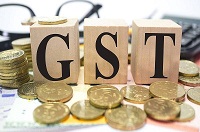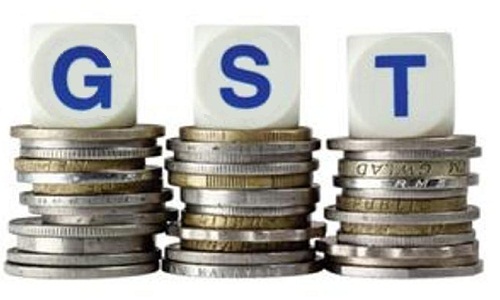"Introduction of GST replacing the present indirect taxes will have considerable impact on the textile industry. However, GST’s true impact can be determined only after final rates are declared for goods. Presently, most garment manufacturers opt for either complete excise duty exemption or payment at 2 per cent without Cenvat credit benefit as most of the raw materials do not face excise duty, especially for cotton based sector. On branded garments, the effective excise duty rate would be 1.2 per cent (if opted for 2 per cent payment with abatement of 40 per cent) or 7.5 per cent (if opted for 12.5 per cent payment with abatement of 40 per cent)."
 Introduction of GST replacing the present indirect taxes will have considerable impact on the textile industry. However, GST’s true impact can be determined only after final rates are declared for goods. Presently, most garment manufacturers opt for either complete excise duty exemption or payment at 2 per cent without Cenvat credit benefit as most of the raw materials do not face excise duty, especially for cotton based sector. On branded garments, the effective excise duty rate would be 1.2 per cent (if opted for 2 per cent payment with abatement of 40 per cent) or 7.5 per cent (if opted for 12.5 per cent payment with abatement of 40 per cent). The sales tax would also be paid at lower rates or at concessional rates under composition schemes as applicable in different states.
Introduction of GST replacing the present indirect taxes will have considerable impact on the textile industry. However, GST’s true impact can be determined only after final rates are declared for goods. Presently, most garment manufacturers opt for either complete excise duty exemption or payment at 2 per cent without Cenvat credit benefit as most of the raw materials do not face excise duty, especially for cotton based sector. On branded garments, the effective excise duty rate would be 1.2 per cent (if opted for 2 per cent payment with abatement of 40 per cent) or 7.5 per cent (if opted for 12.5 per cent payment with abatement of 40 per cent). The sales tax would also be paid at lower rates or at concessional rates under composition schemes as applicable in different states.
Implications on indirect tax
 get subsumed. For textile and its products, the GST
rate of 12 per cent is expected. If it is so, then it could have a negative impact as the industry is price sensitive. Paying 12 per cent GST would be costlier for assesses who are presently paying 1.2 per cent excise duty + 5 per cent to 6 per cent of VAT, which amounts to 6 to 7.2 per cent tax. Even input tax credit on inputs and input services may not be sufficient to fill the gap as natural raw materials such as cotton may continue to get exemption in GST regime.
get subsumed. For textile and its products, the GST
rate of 12 per cent is expected. If it is so, then it could have a negative impact as the industry is price sensitive. Paying 12 per cent GST would be costlier for assesses who are presently paying 1.2 per cent excise duty + 5 per cent to 6 per cent of VAT, which amounts to 6 to 7.2 per cent tax. Even input tax credit on inputs and input services may not be sufficient to fill the gap as natural raw materials such as cotton may continue to get exemption in GST regime.
Other materials such as chemicals, dyes, accessories and packing materials, which constitute around 8 per cent to 12 per cent of total material cost could be liable for standard GST of 18 per cent, which is eligible as input tax credit when output GST is paid. However, in case of manmade fibres, most assesses have been paying excise duty at regular rates along with VAT. Inputs such as polyster fibre, nylon and other petrochemicals suffer excise duty, which can be claimed as Cenvat credit.
This segment may get level playing field as GST rate of 12 per cent could have positive impact on them who are already paying more than 12 per cent tax. For this sector, seamless credit could also result in lower price of goods which could boost demand for non-cotton garments benefitting consumers by way of price reduction. It is expected that there can be a gradual shift in the domestic textile industry towards manmade fibre under GST regime due to tax advantage.
Option of tax payment job work in GST
Even in GST regime, the principal would get the option of sending inputs or capital goods for job work. Raw materials sent to be received back within one year and capital goods to be received back within three years. If the goods are not received within this time limit, then supply of goods would be treated as supply for levy of GST. The processed goods could also be sent directly to customers of principal, provided job workers are registered or the details of job workers place are added as additional place of business in principal’s registration certificate.
The principal manufacturers who have authorised the job workers to pay excise duty may be required to pay GST directly instead of authorising the job workers. However, when the goods are procured and supplied by job workers after processing, then the same would be treated as supply for levy of GST by job workers. Wherever the principal manufacturers are sending goods to job work units who are not required to be registered under GST regime, such units are to be added as additional place of business in principal’s registration certificate. It may be noted that the job work processing on goods sent by the principal would be treated as service for GST purpose. Job workers could choose GST exemption if the value of such services is not exceeding Rs20 lakh per annum.
However, such option may not be feasible as it would break the input tax credit chain. GST payment option could be a better choice as GST would provide seamless credit on goods and services. This would be beneficial even for the principal manufacturers. Therefore, the educating the job workers would be important. There are a few transitional provisions which are applicable for the incomplete transactions and also requirement of declarations to ensure credit on the closing stock.
GST and Exports
In GST regime, duty drawback may lose relevance as there would be seamless credit at each stage of value addition and better transparency. Even if duty drawback is continued to offset the impact of basic customs duty component, which is non-creditable tax, the drawback rate could be very less. This could impact largely, those assesses who are dependent on duty drawbacks for achieving good margin / profit.
Exports would be zero rated supplies under GST with benefit of credits on goods and services procured. The accumulated credits could be claimed as refund within 2 years from specified date. Due to better transparency, refunds could be faster in GST regime. Based on model GST law as updated in November 2016, 90 per cent of the refund would be provisionally processed after filing of refund application subject to certain conditions. If this is really executed by the Government, then it could solve the cash flow problem for the industry.

 get subsumed. For textile and its products, the GST
get subsumed. For textile and its products, the GST

 get subsumed. For textile and its products, the GST
get subsumed. For textile and its products, the GST